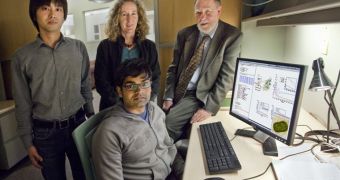Though solar panel technology has come a long way over the past few years, it is still plagued by low conversion rates. This means that only a small portion of the sunlight that hits the panels actually gets converted to electricity. In a bid to increase efficiency rates, researchers turned to nature, and looked at how plants draw their power from the Sun using photosynthesis. Now, in a groundbreaking new study, researchers at the US Department of Energy's (DOE) Lawrence Berkeley National Laboratory (Berkeley Lab) managed to characterize a basic quantum phenomenon underlying photosynthesis.
The team is perfectly aware of the fact that green, renewable energy can be obtained from the Sun at sufficiently-high rates only if such studies yield valid conclusions. What the Berkeley Lab did was observe and characterize the way in which quantum entanglement affects photosynthesis for the first time ever. Their results could have significant implications for manufacturing much more efficient solar panels in the future. The group collaborated closely with colleagues from the University of California in Berkeley (UCB) for this investigation.
Quantum mechanical effects were some time ago discovered to underlie plants' abilities of converting sunlight into electrochemical energy. That discovery was made by UCB/Berkeley Lab physical chemist Graham Fleming and his team. Now, the same group finds that entanglement is in fact a natural feature of those quantum effects. The concept of entanglement refers to the fact that two quantum particles can be bound through what Albert Einstein termed a “spooky action at a distance.”
This means that any changes to a particle will immediately affect the second one, even if the two are not in physical contact with each other. This allows them to perform as single entity, and plants to instantaneously transfer solar energy from molecules in light-harvesting complexes to molecules in electrochemical reaction centers.
“This is the first study to show that entanglement, perhaps the most distinctive property of quantum mechanical systems, is present across an entire light harvesting complex. While there have been prior investigations of entanglement in toy systems that were motivated by biology, this is the first instance in which entanglement has been examined and quantified in a real biological system,” says Berkeley Center for Quantum Information and Computation postdoctoral researcher Mohan Sarovar. The expert is working under the directions of UCB chemistry professor Birgitta Whaley.
“The lessons we’re learning about the quantum aspects of light harvesting in natural systems can be applied to the design of artificial photosynthetic systems that are even better. The organic structures in light harvesting complexes and their synthetic mimics could also serve as useful components of quantum computers or other quantum-enhanced devices, such as wires for the transfer of information,” Sarovar concludes.

 14 DAY TRIAL //
14 DAY TRIAL //